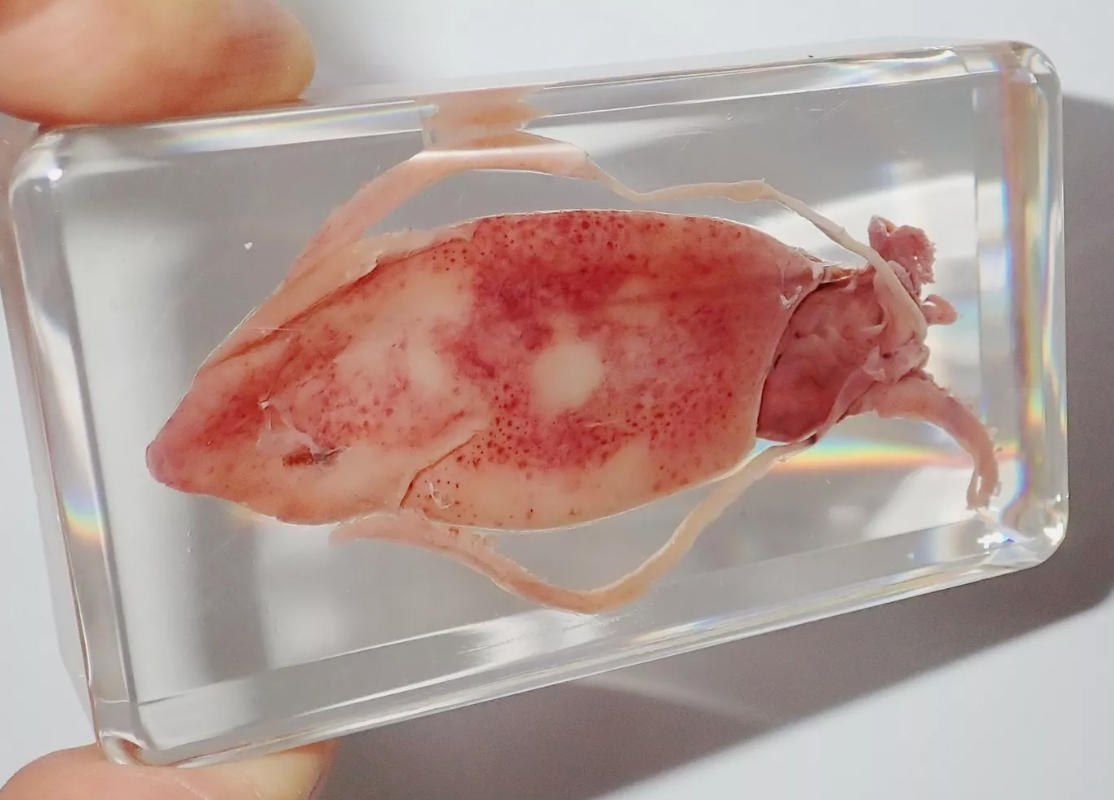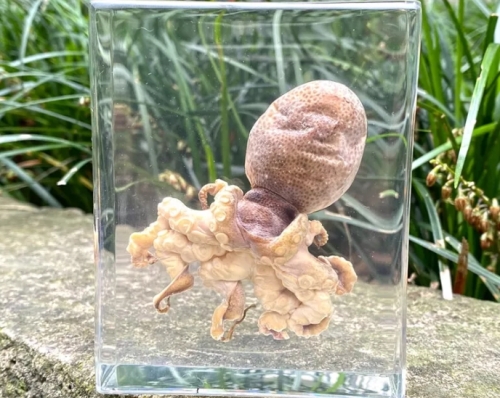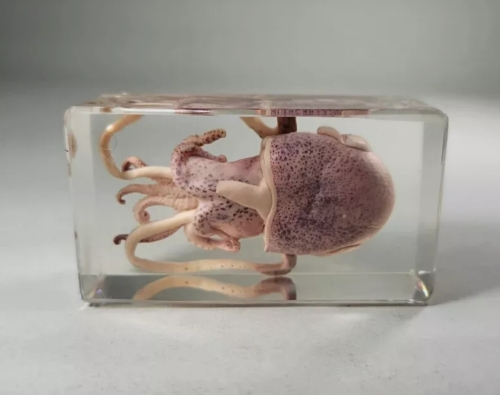The squid specimen is a unique natural specimen that is often used for biological research and education. Squid belong to the phylum mollusca, Cephalopoda, and possess complex structural and physiological characteristics. Their bodies are usually streamlined, adapted to a fast-swimming lifestyle, and they are highly predatory. The preparation of squid into specimens can give people a deeper understanding of the internal structure and ecological characteristics of this mysterious creature.
In the preparation of squid specimen, it is necessary to cut and treat it first. After dissection, the musculature and internal structure of the squid were observed. Its special ink sac can release ink when threatened to protect itself to escape, showing survival wisdom. In addition, the squid's touch arms and tentacles are also noteworthy parts, these organs are not only used for hunting, but also play an important role in reproduction and social interaction.
Squid live in a variety of environments, adapting to a wide range of waters from shallow coastal waters to deep ocean waters. By studying squid specimens, ecological adaptation strategies such as concealment and swimming ability can be revealed. These characteristics help squid to be more flexible and efficient when hunting and avoiding predators. Understanding the physiology of these organisms will help scientists better understand the complexity of Marine ecosystems.
At the same time, squid specimens are also important tools for education. In the classroom, students can intuitively understand the diversity and adaptability of organisms by observing the morphology and structure of specimens. This kind of practical activity not only stimulates students' curiosity, but also enhances their hands-on ability and observation. They serve as a bridge between theory and practice, making abstract biological knowledge concrete and vivid.
















